On April 26, 1986, A Power Surge Caused An Explosion At The Chernobyl Nuclear Power Plant Near Pripyat,
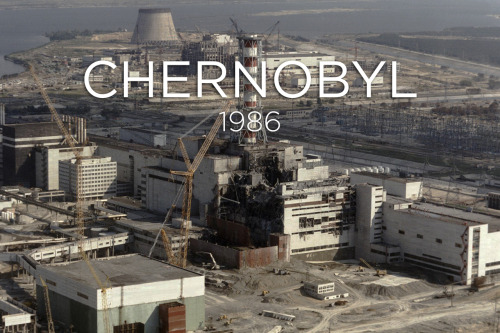
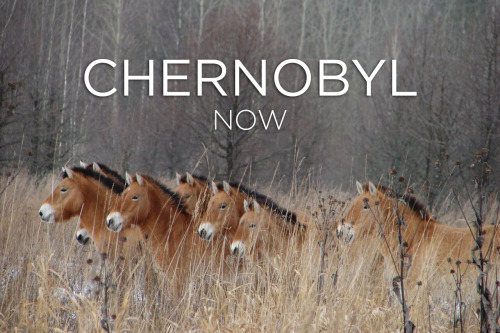
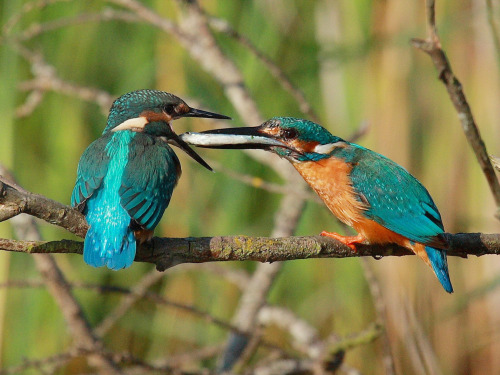
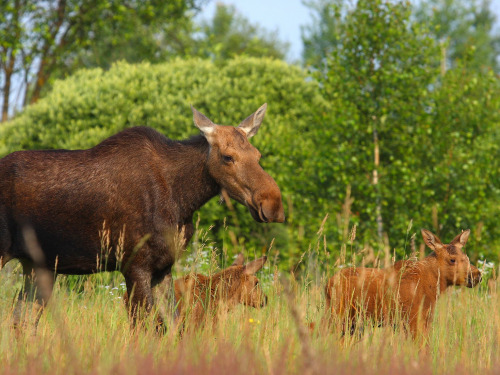
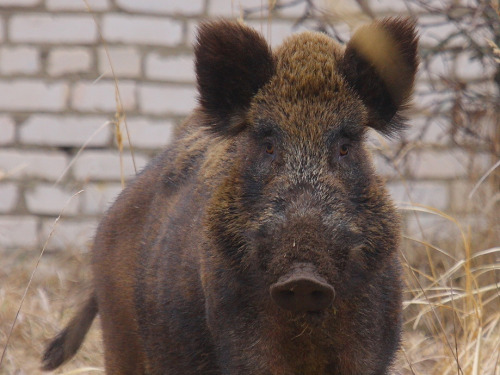
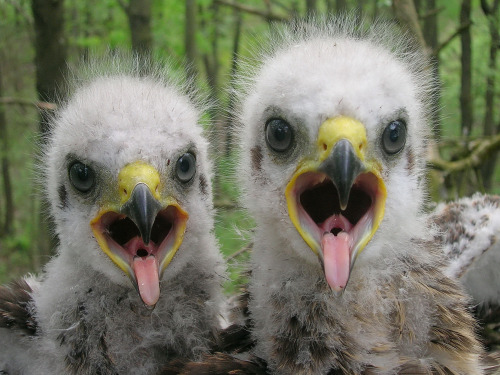
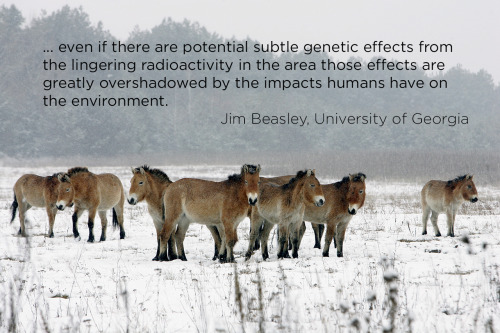
On April 26, 1986, a power surge caused an explosion at the Chernobyl Nuclear Power Plant near Pripyat, Ukraine. A large quantity of radioactive material was released.
On May 2, 1986, the Soviet government established a “Zone of Alienation” or “Exclusion Zone” around Chernobyl – a thousand square miles of “radioactive wasteland.” All humans were evacuated. The town of Pripyat was completely abandoned.
But the animals didn’t leave. And a new study, published this month in Current Biology, suggests they are doing fine. “None of our three hypotheses postulating radiation damage to large mammal populations at Chernobyl were supported by the empirical evidence,” says Jim Beasley, one of the researchers.
In fact, some of the populations have grown. These photos (mostly taken by Valeriy Yurko) come from the Belarusian side of the Exclusion Zone, and area called the Polessye State Radioecological Reserve. Kingfisher, elk, boar, baby spotted eagles, wild ponies, moose, rabbits, and wolves all make their home in the park. In some ways, human presence is worse for wildlife than a nuclear disaster.
Image credits:
1986 Chernobyl - ZUFAROV/AFP/Getty Images
Wildlife photos - Valeriy Yurko/Polessye State Radioecological Reserve
Ponies in winter - SERGEI SUPINSKY/AFP/Getty Images
More Posts from Dotmpotter and Others

A Tree of Life For 2.3 MILLION Species!
This week, scientists released this massive tree of life showing the evolutionary relationships between 2.3 million different species, encompassing every scale of life from bacteria to blue whales. This massive undertaking combines more than 500 previous trees into one, the result being the largest and most complete tree of evolutionary relationships as we know them today.
Like evolution itself, this diagram will continue to evolve as scientists fill in gaps and uncover more detailed information on the genetic relationships of Earth’s various species, but it’s not too shabby for a first draft. You can read more from Rachel Feltman at The Washington Post.

This type of wheel-like diagram is called a Hillis plot, one of my favorite ways of illustrating the tree of life. I’ve even found one drawn on an actual tree:

“I think” we’ve come a long way since Darwin’s original 1859 sketch in On The Origin of Species, don’t you?

Amazing Maps of the World

This is just great.

Cities as a Lab: Designing the Innovation Economy demonstrates how design can foster innovative approaches to the changing needs of American cities. The world is increasingly urbanizing and cities and their wider metropolitan areas are asserting themselves as a fundamental unit of the global economy. Cities can thrive by building transformational places that incubate creativity and adapt to future challenges and opportunities. Cities as a Lab explores the design and policy choices now creating the great places of the future: urban design interventions, visionary planning efforts, and public-private partnerships. The fabric of the city, with its people, buildings, commerce, and transportation networks, promotes relationship formation, business creation, and game-changing ideas.
UK top government official: human rights no longer a "top priority"

Sir Simon McDonald, Permanent Secretary at the Foreign Office – the country’s most senior Foreign Office official – told MPs that his department had sidelined human rights work in favour of global trade agreements (the same agreements that allow sovereign wealth funds from the world’s most brutal, oppressive states to buy huge swathes of the UK’s public institutions at knock-down prices in the Tories’ great sell-off of public assets).
It’s called the “prosperity agenda” – promoting business at the expense of human rights. For example, Chancellor George Osborne just conducted a trade-mission to China where he didn’t raise human rights issues at all, because “we have different political systems.”
It used to be that globalists argued for liberalised trade with criminal states because it would somehow lift their populations out of forced labour, mass incarceration and totalising surveillance. Now that these values have been exported to the “free” world, the pretense of a human rights agenda for global trade has been abandoned. Now we’re told thatthe spice must flow because it will make the country rich (just don’t look too hard at who in the country is getting rich).
Read the rest

ADB Finances Renewable Energy Transmission System in India

What would be the effect of more women working in agriculture?
“The women I met in agriculture showed a clear preference for working on organic and small farms, which are more likely than factory farms to reflect the values of animal welfare, human health and environmental sustainability."
-Sonia Faruqi says on what she found when she spent time visiting farms in eight different countries.
Agriculture needs more women (The Atlantic)
Hunting for Organic Molecules on Mars

Did Mars once have life? To help answer that question, an international team of scientists created an incredibly powerful miniature chemistry laboratory, set to ride on the next Mars rover.

The instrument, called the Mars Organic Molecule Analyzer Mass Spectrometer (MOMA-MS), will form a key part of the ExoMars Rover, a joint mission between the European Space Agency (ESA) and Roscosmos. A mass spectrometer is crucial to send to Mars because it reveals the elements that can be found there. A Martian mass spectrometer takes a sample, typically of powdered rock, and distinguishes the different elements in the sample based on their mass.

After 8 years of designing, building, and testing, NASA scientists and engineers from NASA’s Goddard Space Flight Center said goodbye to their tiny chemistry lab and shipped it to Italy in a big pink box. Building a tiny instrument capable of conducting chemical analysis is difficult in any setting, but designing one that has to launch on a huge rocket, fly through the vacuum of space, and then operate on a planet with entirely different pressure and temperature systems? That’s herculean. And once on Mars, MOMA has a very important job to do. NASA Goddard Center Director Chris Scolese said, “This is the first intended life-detecting instrument that we have sent to Mars since Viking.”

The MOMA instrument will be capable of detecting a wide variety of organic molecules. Organic compounds are commonly associated with life, although they can be created by non-biological processes as well. Organic molecules contain carbon and hydrogen, and can include oxygen, nitrogen, and other elements.

To find these molecules on Mars, the MOMA team had to take instruments that would normally occupy a couple of workbenches in a chemistry lab and shrink them down to roughly the size of a toaster oven so they would be practical to install on a rover.

MOMA-MS, the mass spectrometer on the ExoMars rover, will build on the accomplishments from the Sample Analysis at Mars (SAM), an instrument suite on the Curiosity rover that includes a mass spectrometer. SAM collects and analyzes samples from just below the surface of Mars while ExoMars will be the first to explore deep beneath the surface, with a drill capable of taking samples from as deep as two meters (over six feet). This is important because Mars’s thin atmosphere and spotty magnetic field offer little protection from space radiation, which can gradually destroy organic molecules exposed on the surface. However, Martian sediment is an effective shield, and the team expects to find greater abundances of organic molecules in samples from beneath the surface.

On completion of the instrument, MOMA Project Scientist Will Brinckerhoff praised his colleagues, telling them, “You have had the right balance of skepticism, optimism, and ambition. Seeing this come together has made me want to do my best.”
In addition to the launch of the ESA and Roscosmos ExoMars Rover, in 2020, NASA plans to launch the Mars 2020 Rover, to search for signs of past microbial life. We are all looking forward to seeing what these two missions will find when they arrive on our neighboring planet.
Learn more about MOMA HERE.
Learn more about ExoMars HERE.
Follow @NASASolarSystem on Twitter for more about our missions to other planets.
Make sure to follow us on Tumblr for your regular dose of space: http://nasa.tumblr.com.
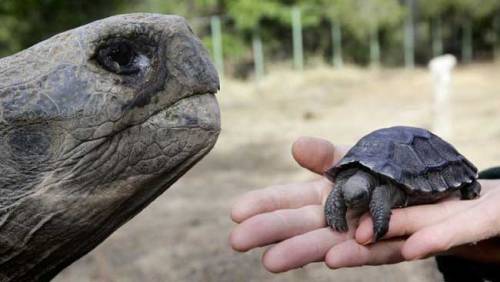
Baby Tortoises Show Up In The Galapagos For The First Time In Over A Century
There hadn’t been one single baby tortoise sighting in more than a century on the Galapagos Island of Pinzon, until a small group of the tiny, shelled youngsters were spotted this year.
The recent births are helping to pull the critically endangered animals back from the brink of extinction after they were nearly laid to waste as a result of human activity.
This is huge news for a species that has been struggling to survive for a century, relying on humans raising young tortoises bred in captivity until they are large enough to not fall prey to rats and predators.
The Most Metal Mass Extinction Events, Ranked
in the style of The Toast
That One Unnamed Extinction Event That Happened When Blue-Green Algae Discovered Photosynthesis and Started Pumping the Environment Full of Oxygen, Which Was Toxic to All Other Life on Earth at That Point in Time
This extinction event did result in the extinction of more living organisms than any other, whether you rank by number of individuals, number of orders/genera/species, % of life, or amount of biomass, but they were all single-celled organisms, so they don’t even register on the metal scale.
The Current Slow Slide Due to Anthropogenic Environmental Modification
Habitat destruction isn’t very metal.
Late Devonian
Some super-weird shit died out, which is totally metal, but we have no idea why, which isn’t. It might not even have been an extinction event, just a decrease in the speciation rate. Jawed vertebrates totally unaffected.
End Ordovician
Second-largest extinction event after the End Permian (not counting those blue-green algae fuckers). Caused by tectonic plate shifting (kinda metal) and resulting glaciation (mildly metal).
Deep Impact
Pros: Giant asteroid hitting the earth.
Cons: Fictional.
End Triassic
Probably caused by massive volcanic eruptions, which is pretty metal, but mostly just wiped out some weird looking amphibians, which is only mildly metal.
End Permian
Greatest extinction event of all time (with the exception of that blue-green algae fiasco mentioned above), wiping out ~95% of all species: metal. Only known mass extinction of insects: metal. Probably caused by the biggest volcanic eruptions since life began (metal) which ignited massive coal beds (metal) and caused the release of methane from the ocean floor (metal) resulting in a runaway greenhouse effect that raised the average ocean temperature to 40C for several million years, essentially boiling the earth alive (super metal). Paved the way for dinosaurs to take over the earth: metal. Known as the ‘Great Dying’: totally metal.
However, most of the extinctions occurred in sessile marine organisms, which are way too boring to be metal, and for the first ~20 million years after the extinction event, land was dominated by Lystrosaurus, which is the most un-metal looking reptile you can think of.
End Cretaceous, aka the K-T Event
A GIANT FLAMING BALL OF ROCK HIT THE EARTH AND KILLED ALL THE (non-avian) DINOSAURS. ENOUGH SAID.
-
 jade-kit reblogged this · 1 month ago
jade-kit reblogged this · 1 month ago -
 jade-kit liked this · 1 month ago
jade-kit liked this · 1 month ago -
 conning-the-masses reblogged this · 1 month ago
conning-the-masses reblogged this · 1 month ago -
 homeybee liked this · 2 months ago
homeybee liked this · 2 months ago -
 harrietsc liked this · 2 months ago
harrietsc liked this · 2 months ago -
 whattheforck liked this · 2 months ago
whattheforck liked this · 2 months ago -
 forthefearofme reblogged this · 2 months ago
forthefearofme reblogged this · 2 months ago -
 hooliganhiccups reblogged this · 2 months ago
hooliganhiccups reblogged this · 2 months ago -
 graceflavored liked this · 2 months ago
graceflavored liked this · 2 months ago -
 heartofanenigma liked this · 2 months ago
heartofanenigma liked this · 2 months ago -
 reduxskullduggerry reblogged this · 2 months ago
reduxskullduggerry reblogged this · 2 months ago -
 sleepyleopard liked this · 2 months ago
sleepyleopard liked this · 2 months ago -
 fandomchaosposts liked this · 2 months ago
fandomchaosposts liked this · 2 months ago -
 thedudegirlentity liked this · 2 months ago
thedudegirlentity liked this · 2 months ago -
 poormeowmeowcollector reblogged this · 2 months ago
poormeowmeowcollector reblogged this · 2 months ago -
 poormeowmeowcollector liked this · 2 months ago
poormeowmeowcollector liked this · 2 months ago -
 cloudyrainyspring reblogged this · 2 months ago
cloudyrainyspring reblogged this · 2 months ago -
 cloudyrainyspring liked this · 2 months ago
cloudyrainyspring liked this · 2 months ago -
 rin-hanarin liked this · 2 months ago
rin-hanarin liked this · 2 months ago -
 aastheniaa liked this · 2 months ago
aastheniaa liked this · 2 months ago -
 salbeitraeume reblogged this · 2 months ago
salbeitraeume reblogged this · 2 months ago -
 falle-ness liked this · 2 months ago
falle-ness liked this · 2 months ago -
 cotton-glass reblogged this · 2 months ago
cotton-glass reblogged this · 2 months ago -
 lenichque reblogged this · 2 months ago
lenichque reblogged this · 2 months ago -
 alfys-pigeon-house reblogged this · 2 months ago
alfys-pigeon-house reblogged this · 2 months ago -
 alfys-pigeon-house liked this · 2 months ago
alfys-pigeon-house liked this · 2 months ago -
 special-agent-spooky-mulder liked this · 2 months ago
special-agent-spooky-mulder liked this · 2 months ago -
 dick-helmet-magneto reblogged this · 2 months ago
dick-helmet-magneto reblogged this · 2 months ago -
 psbjpeg liked this · 2 months ago
psbjpeg liked this · 2 months ago -
 thankstothe reblogged this · 2 months ago
thankstothe reblogged this · 2 months ago -
 delicate-ruins reblogged this · 2 months ago
delicate-ruins reblogged this · 2 months ago -
 delicate-ruins liked this · 2 months ago
delicate-ruins liked this · 2 months ago -
 jambos6 liked this · 2 months ago
jambos6 liked this · 2 months ago -
 mexican-hug-cartel liked this · 2 months ago
mexican-hug-cartel liked this · 2 months ago -
 gumi-bear01 reblogged this · 2 months ago
gumi-bear01 reblogged this · 2 months ago -
 gumi-bear01 liked this · 2 months ago
gumi-bear01 liked this · 2 months ago -
 overlyactivepingpongball liked this · 2 months ago
overlyactivepingpongball liked this · 2 months ago -
 jambos6 reblogged this · 2 months ago
jambos6 reblogged this · 2 months ago -
 shadow2frogs reblogged this · 2 months ago
shadow2frogs reblogged this · 2 months ago -
 shadow2frogs liked this · 2 months ago
shadow2frogs liked this · 2 months ago -
 junezsq-core liked this · 2 months ago
junezsq-core liked this · 2 months ago -
 excalibur-pal reblogged this · 2 months ago
excalibur-pal reblogged this · 2 months ago -
 excalibur-pal liked this · 2 months ago
excalibur-pal liked this · 2 months ago -
 fandomgirl614 liked this · 2 months ago
fandomgirl614 liked this · 2 months ago -
 patheticwetmouse liked this · 2 months ago
patheticwetmouse liked this · 2 months ago -
 sugarskunkcrusade reblogged this · 2 months ago
sugarskunkcrusade reblogged this · 2 months ago -
 sugarskunkcrusade liked this · 2 months ago
sugarskunkcrusade liked this · 2 months ago -
 geocaprican reblogged this · 2 months ago
geocaprican reblogged this · 2 months ago -
 mysrsface liked this · 2 months ago
mysrsface liked this · 2 months ago